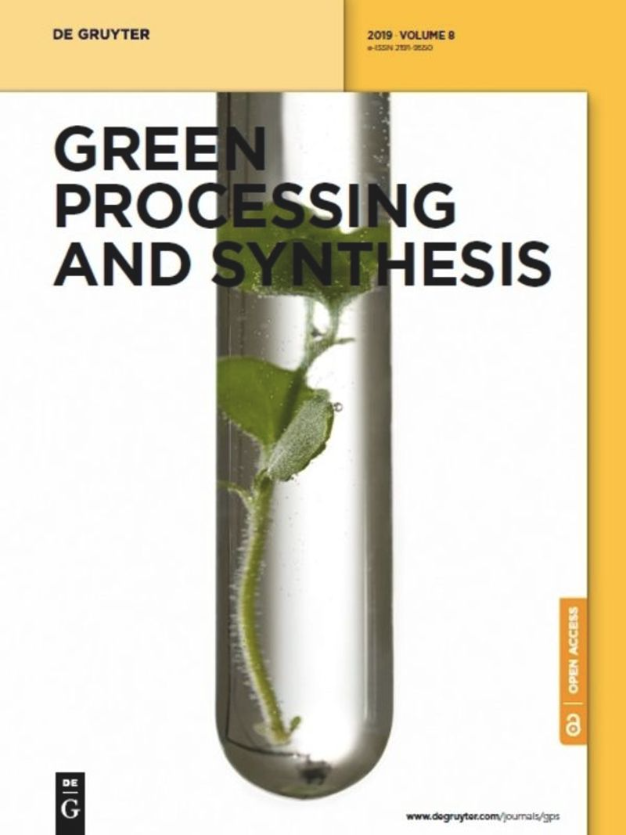The experimental study on the air oxidation of 5-hydroxymethylfurfural to 2,5-furandicarboxylic acid with Co–Mn–Br system
IF 3
4区 工程技术
Q2 CHEMISTRY, MULTIDISCIPLINARY
引用次数: 0
Abstract
Abstract 2,5-Furandicarboxylic acid (FDCA), an eco-friendly biomass resource capable of replacing petroleum-based fuels, is gaining increasing popularity. In this article, 2,5-FDCA was prepared by liquid-phase oxidation of the sustainable precursor 5-hydroxymethylfurfural using the Co–Mn–Br catalyst system. The effects of catalyst concentration, catalyst ratio, reaction temperature, reaction time, reaction pressure, and solvent ratio on the reaction of FDCA were investigated. The products are subjected to qualitative and quantitative analyses using high-performance liquid chromatography, infrared spectroscopy, and hydrogen nuclear magnetic spectroscopy. Moreover, considering the loss of catalytic liquid, the suitable reaction conditions were determined as follows: n (Co)/ n (Mn)/ n (Br) = 1/0.04/0.5, n (HMF)/ n (HAC) = 0.05, reaction temperature of 170°C, reaction pressure of 2 MPa, reaction time 40 min, and airflow rate 1.0 L·min −1 . Under these conditions, the yield of the product is 86.01%, the purity is 97.53%, and the loss of the catalytic liquid is about 5.63%, which is at an ideal level and provides a good basis for the recovery of the subsequent catalytic liquid and multiple cycle reactions. Through the optimization of the existing process, the use of noble metal catalysts has been reduced, and the recycling of catalytic liquid has also reduced the consumption of catalysts. This advancement marks a significant stride toward sustainable development in the green chemical industry.Co-Mn-Br体系空气氧化5-羟甲基糠醛制2,5-呋喃二羧酸的实验研究
摘要2,5-呋喃二羧酸(FDCA)是一种可替代石油基燃料的生态友好型生物质资源,越来越受到人们的欢迎。本文采用Co-Mn-Br催化体系,对可持续前驱体5-羟甲基糠醛进行液相氧化制备了2,5- fdca。考察了催化剂浓度、催化剂配比、反应温度、反应时间、反应压力和溶剂配比对FDCA反应的影响。产品采用高效液相色谱、红外光谱、氢核磁谱进行定性和定量分析。考虑到催化液的损失,确定了适宜的反应条件:n (Co)/ n (Mn)/ n (Br) = 1/0.04/0.5, n (HMF)/ n (HAC) = 0.05,反应温度170℃,反应压力2 MPa,反应时间40 min,风量1.0 L·min−1。在此条件下,产物收率为86.01%,纯度为97.53%,催化液损失率约为5.63%,处于理想水平,为后续催化液和多循环反应的回收提供了良好的基础。通过对现有工艺的优化,减少了贵金属催化剂的使用,催化液的循环利用也降低了催化剂的消耗。这标志着绿色化工向可持续发展迈出了重要一步。
本文章由计算机程序翻译,如有差异,请以英文原文为准。
求助全文
约1分钟内获得全文
求助全文
来源期刊

Green Processing and Synthesis
CHEMISTRY, MULTIDISCIPLINARY-ENGINEERING, CHEMICAL
CiteScore
6.70
自引率
9.30%
发文量
78
审稿时长
7 weeks
期刊介绍:
Green Processing and Synthesis is a bimonthly, peer-reviewed journal that provides up-to-date research both on fundamental as well as applied aspects of innovative green process development and chemical synthesis, giving an appropriate share to industrial views. The contributions are cutting edge, high-impact, authoritative, and provide both pros and cons of potential technologies. Green Processing and Synthesis provides a platform for scientists and engineers, especially chemists and chemical engineers, but is also open for interdisciplinary research from other areas such as physics, materials science, or catalysis.
 求助内容:
求助内容: 应助结果提醒方式:
应助结果提醒方式:


